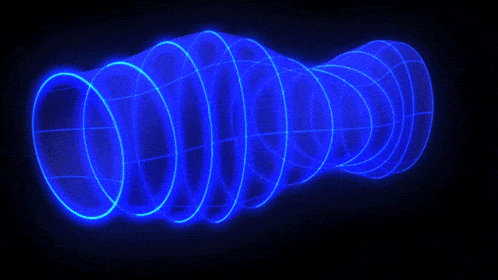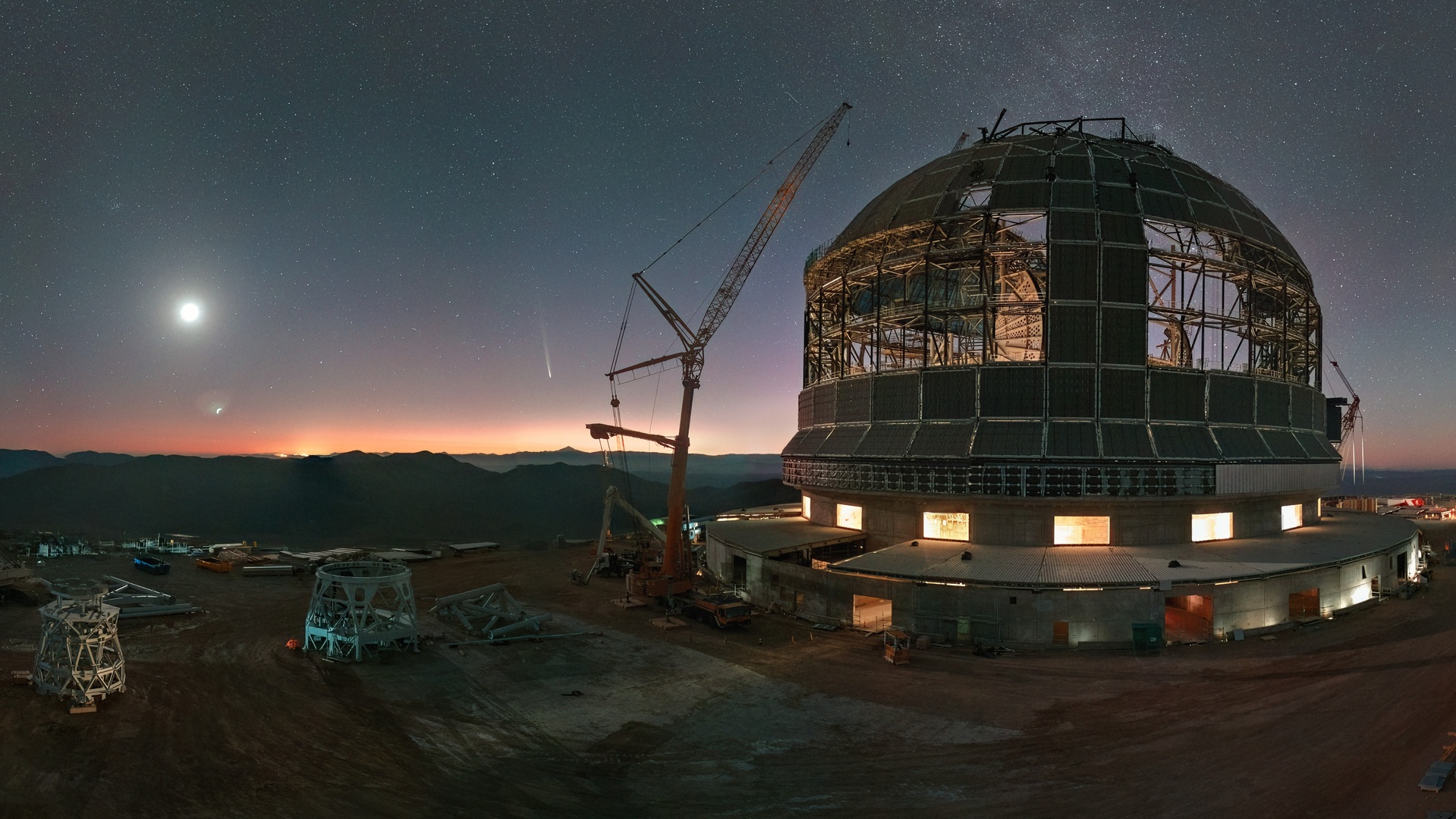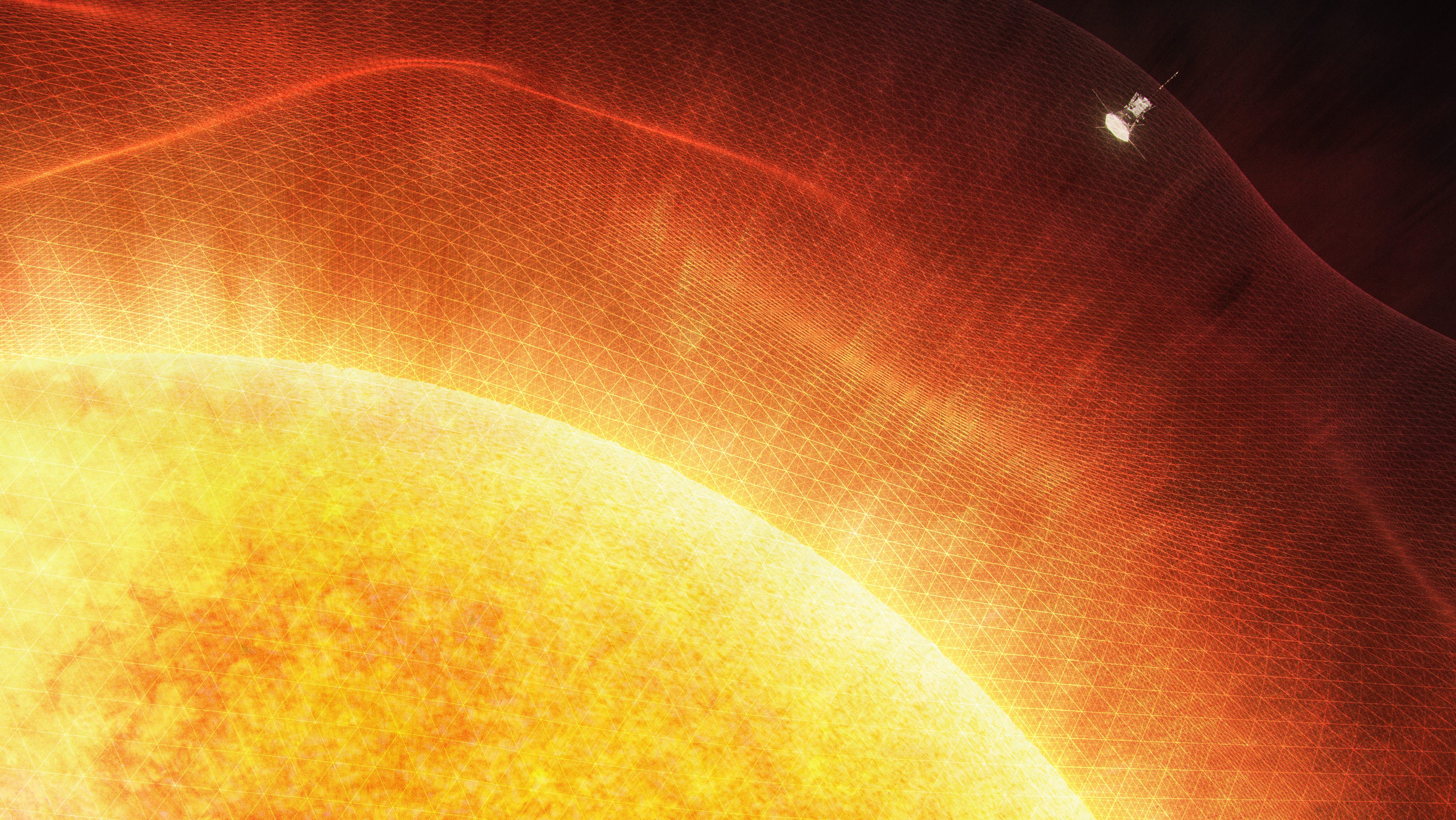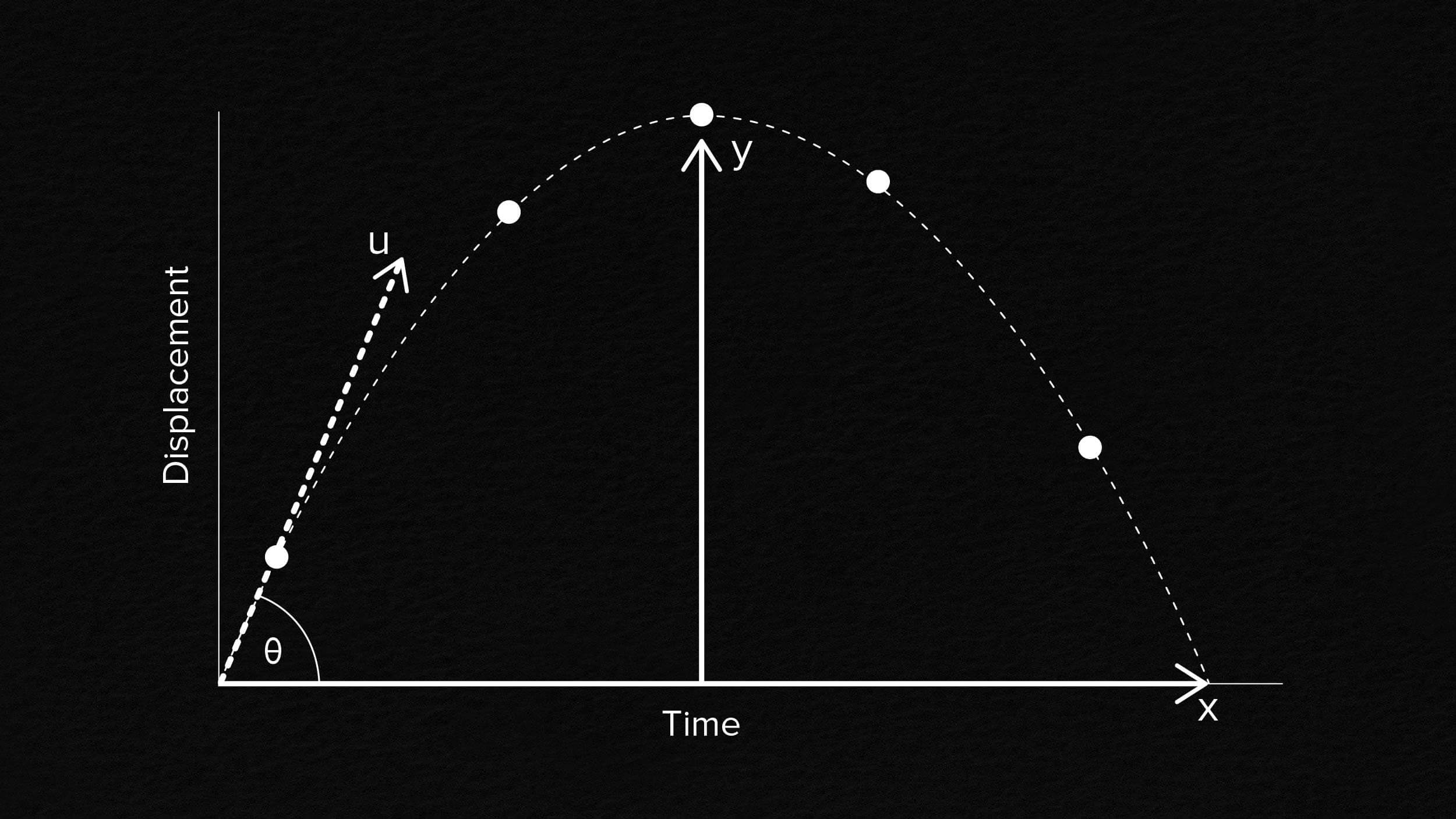This Is How The Sun Moves In The Sky Throughout The Year
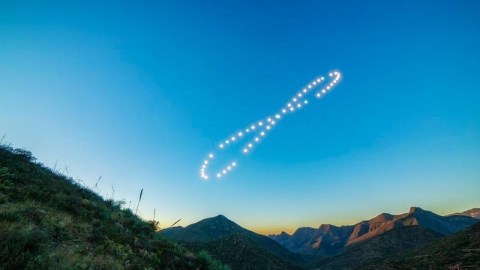
If you photograph the Sun at the same time every day, you get a bizarre figure-8 shape: an analemma. Here’s why.
At any time of day, you could theoretically set up a camera to take a picture of the landscape that encompasses the apparent position of the Sun in the sky. If you came back the next day at the exact same time, 24 hours later, you’d find that the Sun had changed its position ever-so-slightly. If you did this every day for a full year, you’d discover two important things:
- The Sun would have returned to its starting point at long last, as the Earth returned to the same point in its orbit from a year prior.
- The shape you traced out would look like a figure-8 with one loop larger than the other: a shape known as our analemma.
The fact that the Earth orbits the Sun once per year explains the first part. But the motion of the Sun in its particular analemma shape is due to a combination of deep reasons. Let’s find out why.
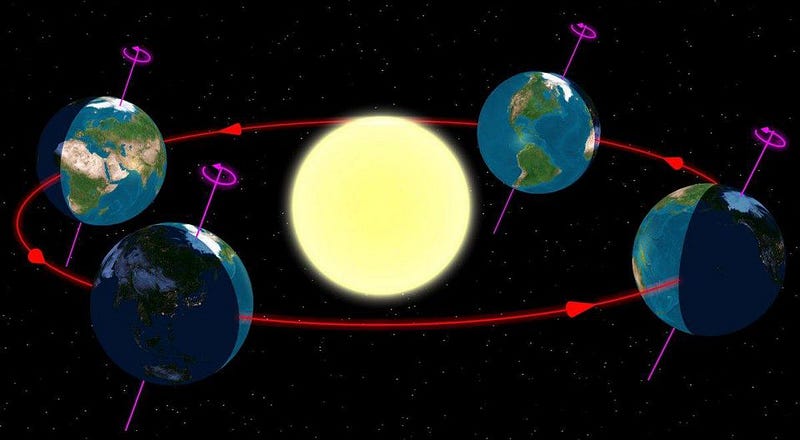
The first major contributor to the Sun’s apparent motion is the fact that Earth orbits the Sun while tilted on its axis. The Earth’s axial tilt of approximately 23.5° ensures that observers at different locations will see the Sun reach higher-or-lower positions above the horizon throughout the year. When your hemisphere is tilted towards the Sun, the Sun’s maximum position will rise closer to the zenith, while when your hemisphere is tiled away, the Sun’s maximum position will depart farther from it.
When your half of the world is tilted towards our parent star, the path of the Sun through the sky appears longer, rises higher, and gives us more hours of daylight than average. Axial tilt is the cause of seasons on Earth, and explains why there’s such a difference in the length and character of a day on the Summer Solstice versus the Winter Solstice.
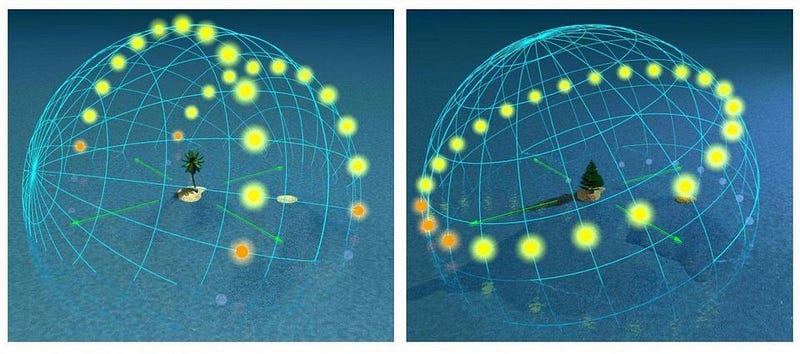
In general, all across the Earth, the Sun appears to rise in the Eastern portion of the sky, rise up high overhead towards the equatorial direction, and then lower down and set in the West. If you live:
- south of 23.5° S latitude, the June solstice marks the Sun’s shortest, lowest path through the sky, while the December solstice marks the longest, highest path.
- north of 23.5° N latitude, the December solstice marks the Sun’s shortest, lowest path through the sky, with the June solstice marking the longest, highest path.
- between the two tropics (between 23.5° S and 23.5° N), the Sun will pass directly overhead on two days equidistant from one solstice.
From any location, if you were to track the position of the Sun throughout the year — such as through a pinhole camera — this is what you’d see.

But the Sun doesn’t appear to simply rise and fall in the sky in a symmetric shape. Sunset and sunrise times vary throughout the year. The Sun reaches its highest point at a variety of times as the seasons change, not merely at noon every day.
The reason for this is largely due to the second main contributor to the Sun’s apparent motion throughout the year: Earth’s orbit around the Sun is elliptical, not circular.
Orbiting in an ellipse doesn’t just mean that the Earth is closer to or farther from the Sun at certain points in its orbit. It also — by Kepler’s second law — means that when the Earth is close to the Sun (perihelion), it possesses a faster orbital speed, and when the Earth is far from the Sun (aphelion), it possess a slower orbital speed.
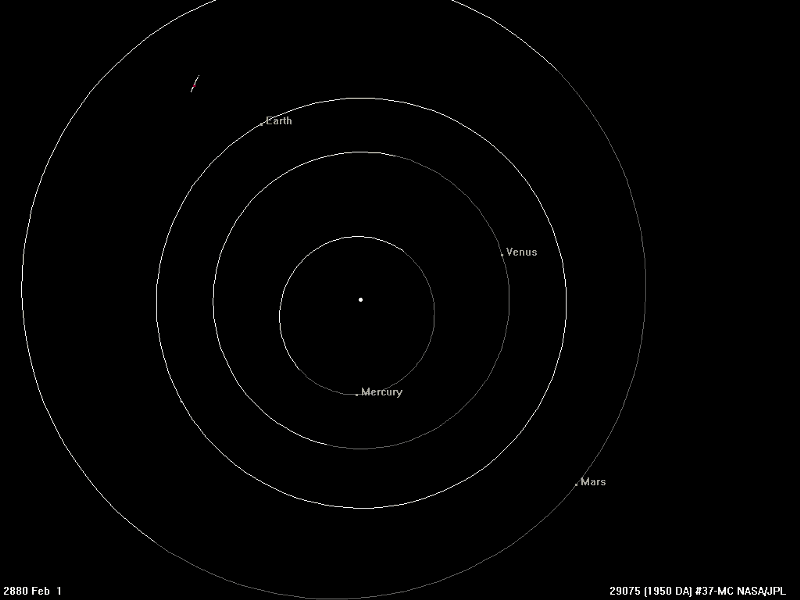
By itself, this wouldn’t make much difference, but now we need to add in another factor: the Earth doesn’t rotate once on its axis every 24 hours. Instead, the Earth makes a full 360° rotation ins just 23 hours and 56 minutes; a day takes 24 hours because it takes those extra 4 minutes to “catch up” to the amount of distance the Earth has traveled in its orbit around the Sun.
During an average day, when the Earth moves at its average speed around the Sun, 24 hours is just right. But when the Earth moves more slowly (near aphelion), 24 hours is too long for the Sun to return to its same position, and so the Sun appears to shift more slowly than average. Similarly, when the Earth moves more quickly (near perihelion), 24 hours isn’t quite long enough for the Sun to come back to where it started, and so it shifts more quickly than average.
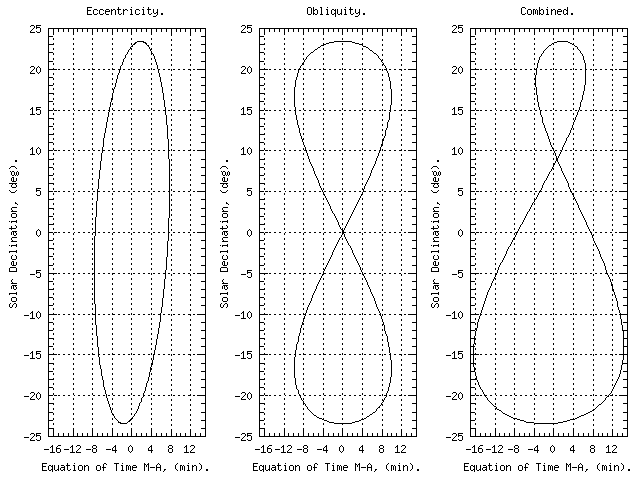
If we only had axial tilt to contend with, and our orbit was a perfect circle, the path the Sun traced out in the sky would be a truly perfect figure-8: symmetryic about both the horizontal and vertical axes.
If we lived on an untilted planet that had an elliptical orbit, the Sun’s path through the sky would simply be an ellipse: where the eccentricity would be the only contributor to how the Sun moves. This is what happens roughly on Jupiter and Venus, where the axial tilts are negligible.
But here on Earth, we have both an elliptical orbit and a significant axial tilt, and so both effects are significant. In particular, when we combine them, we can immediately see why our analemma looks like an “8” that’s pinched on one narrow side.
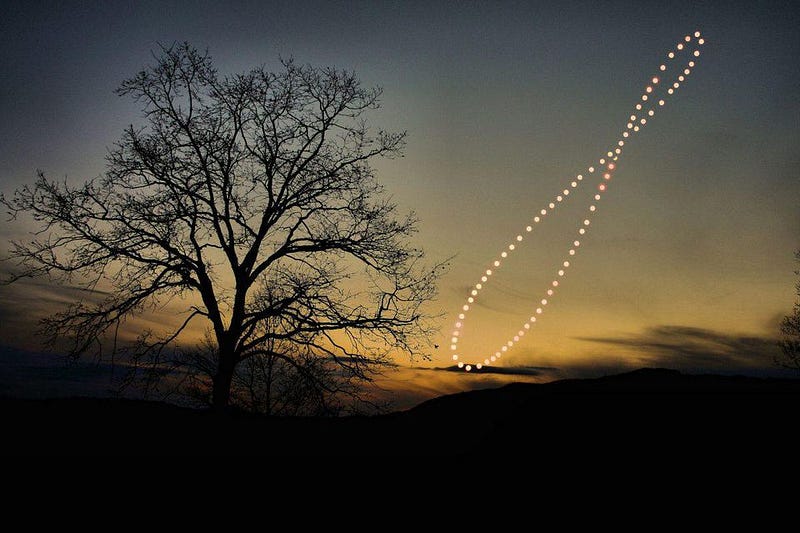
Here on Earth, perihelion occurs on January 3rd: just 2 weeks after the December solstice. Since our planet is in motion with the greatest speed close to the December solstice, that makes the “lower” side of the analemma (from the Northern Hemisphere) much larger than the “upper” side, which coincides with aphelion in early July and the June solstice.
All told, we can combine these effects to make an equation for where the Sun will be located at any particular time as viewed from any location on Earth. We call this derived quantity the equation of time.
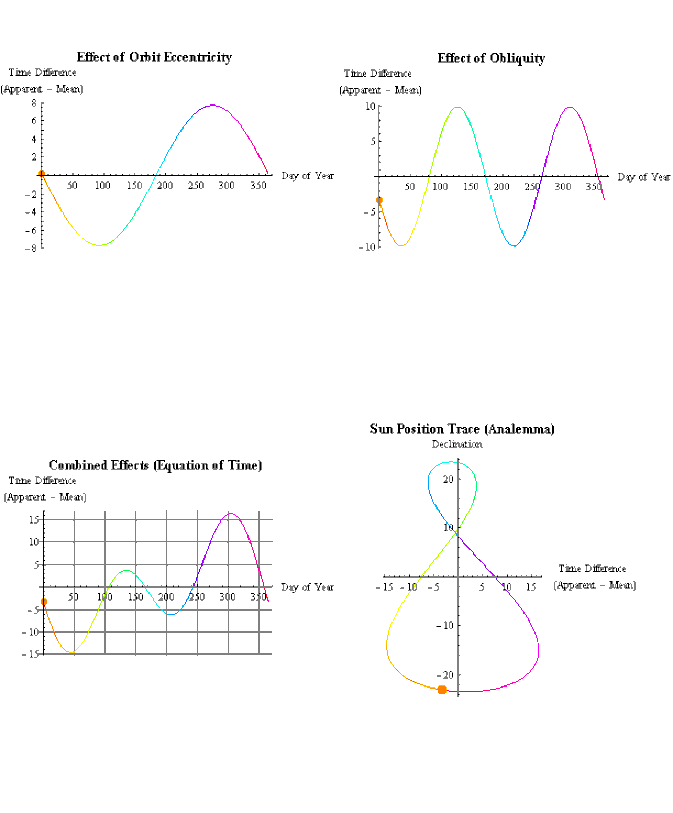
All told, it’s only axial tilt and ellipticity that determine the shape of the Sun’s path as viewed at the same time, every day, from Earth. The Earth’s analemma is fixed in this particular shape.
But there are two more factors at play in determining the exact orientation of the analemma. One is your location on Earth: observers from the Northern Hemisphere will see the small analemma loop occur high in the sky and the large loop occur lower in the sky, while Southern Hemisphere observers will see the reverse.
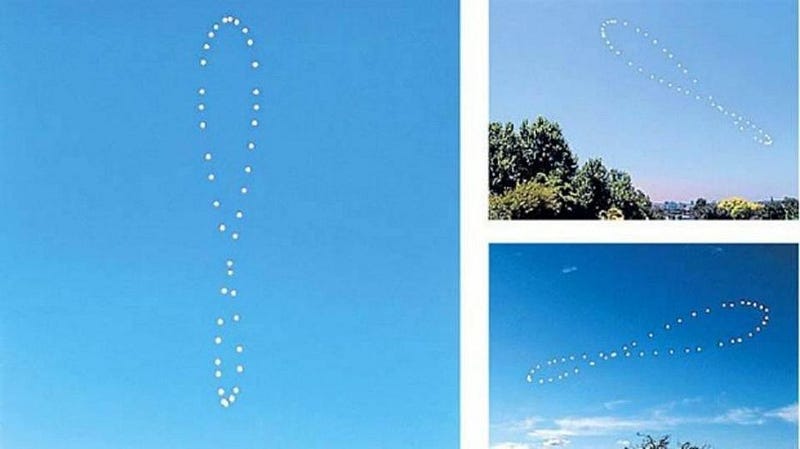
And the other is at what time of day you take your photographs. If you take your daily photograph:
- at noon, when the Sun is at its highest, the analemma will appear perfectly vertical.
- before noon, prior to the Sun reaching its highest, the analemma will appear to be rotated counterclockwise from the noon position.
- after noon, subsequent to the Sun reaching its peak, the analemma will appear rotated clockwise from its noon position.
You can tell, from examining César Cantú’s 52 combined images from throughout the year stitched together, that he photographed the Sun in the late afternoon from his latitude in Mexico.
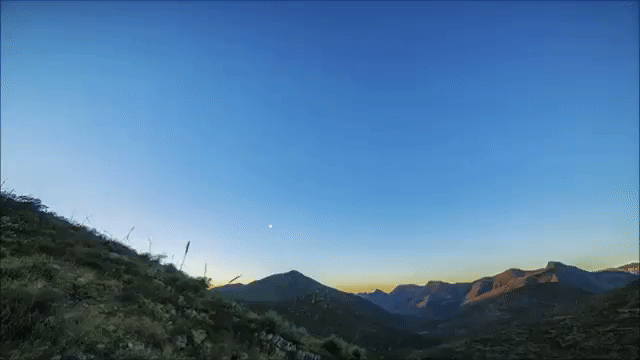
It’s easy to see that the topmost point corresponds to the summer solstice, while the lowest point corresponds to the winter solstice, but there is no special astronomical significance to the “crossing-point” in the Sun’s analemma as seen from Earth. Occurring approximately on April 14th and August 30th, those dates are only determined by the way our seasons, determined by axial tilt, align with our planet’s orbit around the Sun.
If our perihelion and aphelion were aligned with the equinoxes, rather than the solstices, we’d have a teardrop-shaped analemma, rather than a figure-8, which is how the Sun appears from Mars! The analemma is the beautiful, natural shape traced out by the Sun over time, creating a figure-8 as both our orbit and axial tilt dictate. Enjoy the Sun’s motion through our skies, as its unique cosmic pirouette is due to our planet’s one-of-a-kind motion through space!
Ethan Siegel is the author of Beyond the Galaxy and Treknology. You can pre-order his third book, currently in development: the Encyclopaedia Cosmologica.
